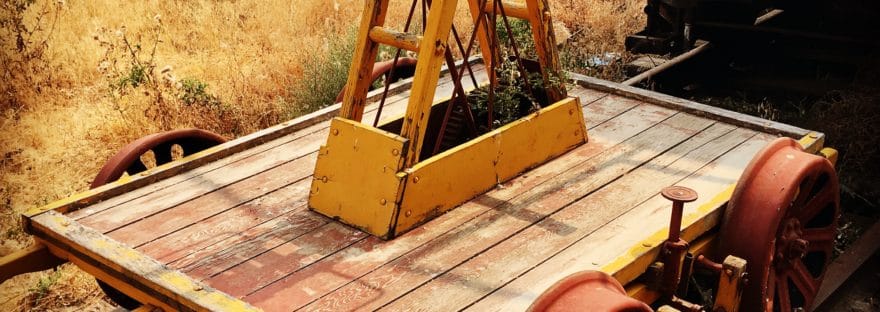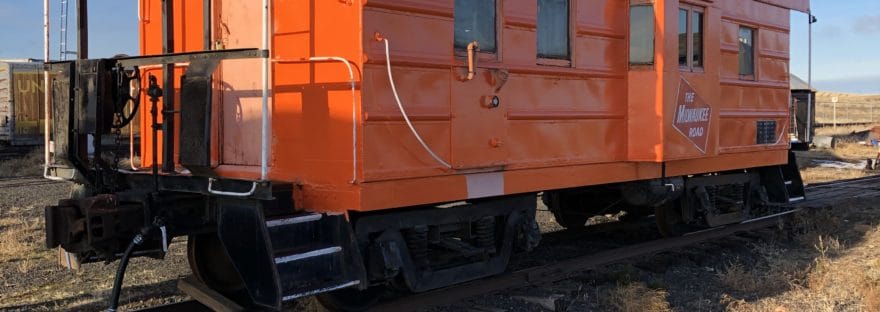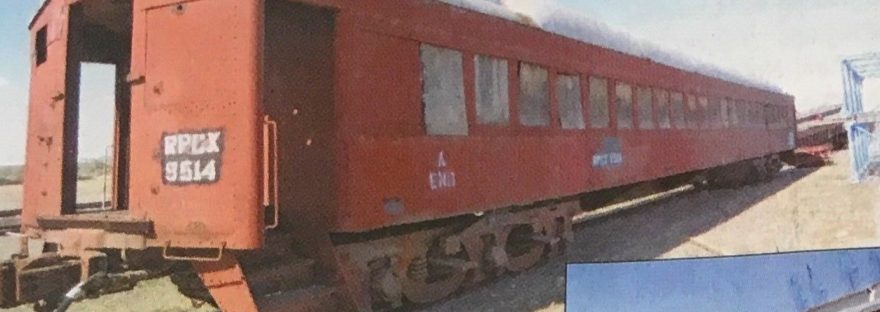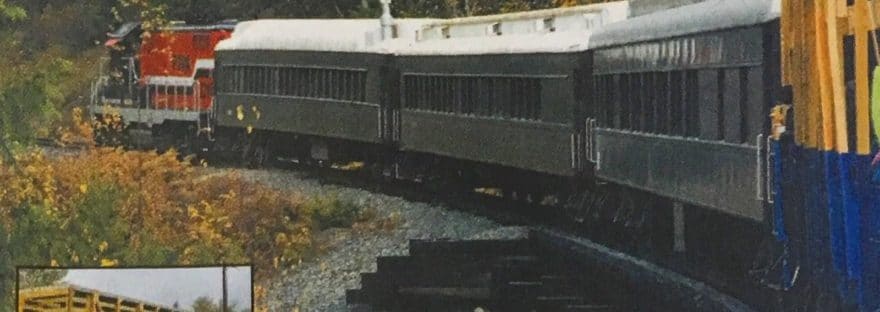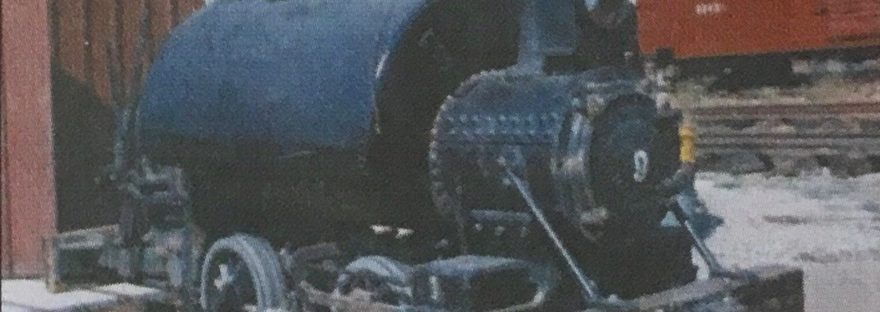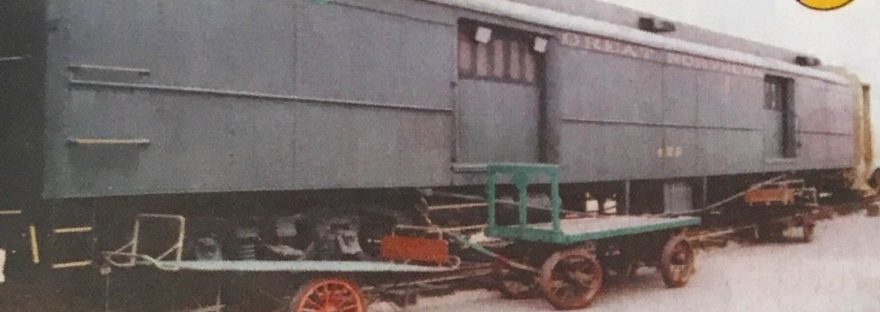Flatcars are rolling stock that consist of an open, flat deck mounted on a pair of trucks, one at each end. They were often designed to carry extra heavy or large loads, such as machinery. The museum owns three different flat cars that are on display and used when needed. Intermodal freight transport-specific cars may be replacing flatcars soon as they are able to double stack container flats.
Category: Our Collection
Handcar
Handcars are railroad cars powered by its passengers typically used for maintenance or mining. It is unknown who invented the handcar, but they have been essential for operating railroads when that was the main form of public transportation from around 1850 to 1910.
Milwaukee Road Caboose #01907
This bay window caboose was built by the Milwaukee Road shops in 1941. It last served on the St. Maries River Railroad and was acquired by the museum in 1994. A fully crewed caboose was required for rail safety until the 1980s.
Great Northern Passenger Coach
Built in 1914 by Barney & Smith as a double-vestibule 84 seat coach #4502, though it was later renumbered. It was renovated in 1935 adding ice-activated air conditioning and a women’s lounge reducing the seating to 78. Since being moved to the museum it has been updated with a new coat of paint and new windows.
Coaches #960, #971 & Stock Car #207
Both the passenger cars were built by the Barney and Smith company. These two passenger cars and the stock car #207 ran for over 20 years by the North Pend Oreille Valley Lions Club. They offered weekend rides to see the scenery and raise money for community projects.
Davenport Locomotive #9
This locomotive is a 2-foot gauge, 10 ton locomotive built by the Davenport Locomotive Works. Davenports became popular with some railroads and especially in the industrial marketplace due to their small size and relatively cheap costs.
Electric Engine #502/J-45 I
This 45 ton, 500 volt DC electric locomotive was built in 1901. It originally was used by the Great Falls Smelter Railway, then by the Boston & Montana Consolidated Copper & Silver Mining Co. The locomotive was repainted black from its original paint.
Great Northern Baggage Car #429
This car was built by Barney and Smith originally as a wooden passenger car, then converted to a business car A-12, then rebuilt in 1940 as a metal-sheathed wooden baggage car as it is now. It is now on display as part of our museum train and showcases lots of memorabilia inside the car.
Union Pacific American Scene Sleeper Car
This car is 84 feet and 9 inches long, built in 1942 as a duplex-roomette for the UPRR by the Pullman Company. Models have 24 rooms in a single car among the two levels. This car had four bedrooms, six roomettes and six open pullman sections with upper and lower berths. In 1928, the car was retired and stripped, but was then used as a bunk car until the 1970s. It was donated to the museum in 1995 and has served as a key part of our museum train for 20 years.

Air Locomotive #28
H.K. Porter Company in Pittsburgh, PA, built this diminutive 18″ gauge 0-4-OCA (Compressed Air) engine in 1910 for the Homestake Mining Company in Lead, SD. It has 6″ x 10″ cylinders. Compressed air was a suitable form of power for mining because it produced no noxious fumes or damp-causing steam. In 1901 the mine started using compressed air locomotives, replacing mules and horses by the 1920s.


